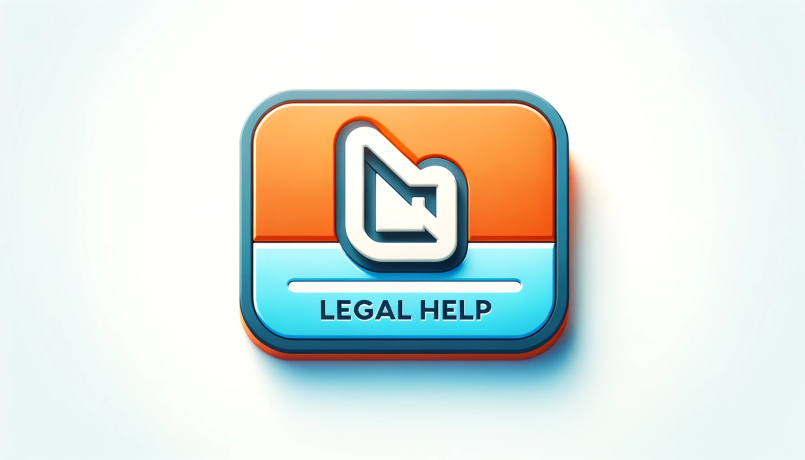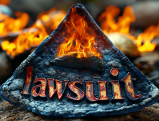
When a loved one's death is caused by negligence or wrongdoing, surviving family members can pursue justice and compensation through a California wrongful death lawsuit. This guide explores 10 essential considerations, from who can file a claim to what damages are recoverable.
by LawInc Staff
June 15, 2024
Losing a loved one is never easy, but when their death is caused by someone else’s negligence or wrongful act, the anguish is even more profound. While no amount of money can bring back a cherished family member, California law allows eligible surviving relatives to pursue wrongful death claims seeking justice and compensation for their losses.
This guide explores 10 essential things you need to know about California wrongful death laws and lawsuits. From who can file a claim to what damages are recoverable to common legal issues and pitfalls, get the critical information required to protect your family’s rights after a tragic loss.
Understanding statutes of limitations, liable parties, settlement vs. trial considerations and more empowers you to make informed decisions during this difficult time. Consult an experienced wrongful death attorney for personalized guidance on proceeding with your specific case.
1. Know Who Can File a Wrongful Death Lawsuit in California
-
- Surviving Spouse or Domestic Partner: The victim’s legal husband, wife or registered domestic partner at the time of death.
- Surviving Children: The deceased person’s surviving children, including adopted children but not stepchildren.
- Other Eligible Relatives: If there is no surviving spouse, partner or children, other relatives like parents or siblings may bring a claim.
- Parents of a Deceased Fetus: Parents can file a claim for the wrongful death of a fetus due to negligence or wrongful acts.
- Personal Representative: The personal representative of the deceased’s estate may file on behalf of eligible survivors.
Examples:
-
- Sarah filed a wrongful death claim after her husband Jim died in a trucking accident caused by a fatigued commercial driver.
- After their mother Marta died from surgical complications, siblings Luis and Theresa brought a wrongful death suit against the negligent doctor.
- With no spouse or kids, Robert’s parents had legal standing to file a wrongful death lawsuit when he was killed by a drunk driver.
- Emily and Tom sued for the wrongful death of their unborn child after medical negligence caused a miscarriage at 30 weeks.
- As the personal representative of Mark’s estate, his brother Steven filed a survival action seeking compensation for Mark’s pre-death “pain and suffering” from fatal injuries caused by a defective product.
How to Proceed:
-
- Determine which family members are eligible to bring a wrongful death claim under California’s intestate succession laws.
- Consider whether to file individual lawsuits or join together in a single legal action with other qualified relatives.
- Evaluate if any family members may have legal priority over others for filing the claim or controlling major case decisions.
- Have the personal representative of the estate file the suit if consensus among survivors on key issues proves difficult.
- Talk to a knowledgeable attorney about who should serve as the personal representative and what duties that role entails.
FAQs:
-
- Can a long-term partner file a wrongful death claim if they weren’t legally married? Only if they were registered domestic partners. California doesn’t recognize “common law marriage” for purposes of wrongful death claims.
- My adoptive father died from a work injury. Can I still file a wrongful death suit? Yes, the law treats adopted and biological children equally for filing rights. A stepchild may also qualify if they can prove they were financially dependent on the deceased.
- Do I need to open an estate to file a wrongful death claim in California? Not necessarily, but doing so allows the personal representative to bring a survival action for the deceased’s pre-death losses in addition to the wrongful death suit.
- Can I file a wrongful death lawsuit if the deceased never held a job? Yes. While lost income is one aspect of damages, a wrongful death claim can be brought regardless of the victim’s employment status.
- What if my relative died from an illegal act like murder? You likely still have a civil wrongful death case even if there are also criminal charges. A knowledgeable wrongful death attorney can coordinate effectively with law enforcement and prosecutors.
2. Understand the Time Limits for Filing a Claim
-
- Standard Statute of Limitations: Generally, you have 2 years from the date of death to file a wrongful death lawsuit in California.
- Discovery Rule Exception: If the cause of death was not immediately known, you have 2 years from the date you discover (or should have discovered) the wrongful act.
- Government Entity Exception: If the defendant is a government agency or employee, you must first file an administrative claim within 6 months of the death.
- Medical Malpractice Exception: You have 3 years from the date of injury (or 1 year from discovering the injury) to file a medical malpractice wrongful death claim.
- Minor Child Exception: If the victim’s children are under 18, they may have until their 20th birthday to file a claim in some cases.
Examples:
-
- Caroline’s husband Rick died in a plane crash on June 15, 2023, so she must file her wrongful death lawsuit by June 15, 2025.
- Bryan died from a hidden factory defect in his car on January 10, 2022, but his wife Lisa didn’t discover the cause until March 5, 2023. She has until March 5, 2025 to file suit.
- When Randall died from injuries caused by dangerous city property on May 1, 2024, his family had to file an administrative claim with the city by November 1, 2024.
- Carla’s husband Miguel died from undiagnosed cancer on December 1, 2022. She learned of the medical negligence on August 15, 2023, so she has until August 15, 2024 to file her medical malpractice wrongful death claim.
- Paul was only 16 when his single father died in a construction accident on July 20, 2023. Since Paul is a minor child, he has until his 20th birthday to file a wrongful death claim.
How to Proceed:
-
- Calendar the statute of limitations for your wrongful death claim immediately to avoid missing crucial filing deadlines.
- Determine if any exceptions to the standard 2-year time limit apply in your case, like the discovery rule or minor child tolling provisions.
- If the defendant is a government entity, file your required administrative claim well before the 6-month window closes.
- Be aware of special timing rules for medical malpractice cases, which may give you either more or less time to file depending on the facts.
- Consult a knowledgeable wrongful death attorney as soon as possible to ensure you don’t lose your rights by missing a key statutory deadline.
FAQs:
-
- What happens if I miss the statute of limitations? If you file a wrongful death lawsuit after the applicable time limit expires, the court will almost certainly dismiss your case. That’s why understanding and complying with the statute of limitations is so critical.
- Does the discovery rule apply if I don’t know the identity of the liable party? No, it typically only applies when the cause of death is not immediately known. Once you know or suspect the death was wrongfully caused, it’s wise to file suit even against a “Doe” defendant to preserve your rights while you investigate further.
- What if some family members want to file a claim now but others want to wait? With limited exceptions, if any eligible relative files a wrongful death lawsuit, all qualified survivors must join that case or lose their right to pursue the claim later.
- Can the statute of limitations be extended for any reason? Courts rarely extend the statute of limitations in wrongful death cases. One exception may be if the defendant fraudulently concealed key facts or fled the state to evade service. Generally, assume the time limits are firm.
- Will filing a criminal complaint toll the civil statute of limitations? No, any criminal proceedings are separate from your civil wrongful death claim. Don’t wait until the criminal case concludes to explore your family’s civil remedies with an attorney.
3. Determine All Potentially Liable Parties
-
- Negligent Individuals: People whose careless or reckless actions caused your loved one’s death, like distracted drivers, building owners who failed to fix hazards, etc.
- Healthcare Providers: Doctors, nurses, hospitals, and other medical professionals whose substandard care fatally injured the victim.
- Product Manufacturers: Companies that designed, made or sold unreasonably dangerous or defective products which caused the death.
- Employers: Bosses or supervisors that failed to maintain a safe workplace or violated safety regulations, leading to a fatal work accident.
- Government Agencies: City, county, state or federal entities whose negligence or wrongful conduct caused or contributed to the death.
Examples:
-
- The Coleman family filed a wrongful death claim against John Peters, the speeding driver who struck and killed Michelle Coleman in a crosswalk.
- <When Ethan Marks died from a post-surgical infection, his wife pursued a wrongful death claim against the hospital and treating surgeon for medical negligence.
- The Garcias filed suit against Baby Bliss Co. after their infant suffocated on a defective baby monitor cord, alleging product liability for the dangerous design.
- After Jenna Smith died in a warehouse fire, her family brought a wrongful death claim against her employer for multiple fire safety code violations.
- The Lees filed a wrongful death claim against the City of Oakland after a decaying public tree fell on their car during a storm, killing Mrs. Lee.
How to Proceed:
-
- Investigate all possible causes of your loved one’s death to identify every party who may have legal liability.
- Consider individual, commercial, and governmental defendants who may be accountable for negligence or wrongdoing.
- Name all potential defendants in your lawsuit to preserve your right to pursue them for damages as more facts come to light.
- Determine if any liable parties have insurance coverage or assets that could be used to satisfy a wrongful death judgment or settlement.
- Discuss with an experienced attorney who best to target for legal accountability and maximum damage recovery in your specific case.
FAQs:
-
- Can there be more than one liable party in a wrongful death case? Yes, it’s common for multiple parties to share fault, like a drunk driver and the bar that overserved them, or a doctor and hospital both accused of medical negligence.
- How can I find out if a liable party has insurance? Your attorney can investigate the defendants’ insurance coverage and asset picture as your case unfolds. Insurers are also required to disclose policy limits before a case goes to trial.
- What if I think a government agency caused my relative’s death? Special rules apply when suing a government entity, including shorter notice requirements. Consult an attorney as soon as possible to preserve your rights.
- How can I prove a dangerous product caused the death? An experienced product liability attorney can secure key evidence like design documents, manufacturing records and previous consumer complaints to help demonstrate a product defect.
- What if I’m not sure who’s responsible for my family member’s death? An attorney can help you investigate and determine all potentially liable parties. You can also name “Doe” defendants while you work to identify the individuals or entities at fault.
4. Compile Strong Evidence to Prove Your Claim
-
- Police/Incident Reports: Documents from first responders detailing the initial investigation and cause of death.
- Medical Records & Bills: Health records showing the nature and extent of the fatal injuries and resulting treatment costs.
- Death Certificate: Official record of the cause and manner of death (e.g., “accidental drowning”).
- Autopsy/Coroner’s Reports: Findings from postmortem medical examination documenting the injuries and analyzing cause of death.
- Witness Statements: Accounts from people who saw the fatal incident occur or have other relevant knowledge.
Examples:
-
- The Chens obtained the police accident report and traffic camera footage showing the other driver ran a red light before striking and killing Mr. Chen.
- In their wrongful death claim against the hospital, the Orozco family secured medical records documenting the improper intubation that deprived baby Mia of oxygen and caused her cerebral palsy and ultimate death.
- The Jones’s attorney used the autopsy report to show that construction debris on the road caused the fatal rollover accident, not their son’s driving.
- Tina’s family submitted her death certificate listing cause of death as “poisoning” and toxicology reports detecting lethal levels of lead in her system from living in the apartment building.
- Witnesses to the dog attack provided signed statements attesting that the owner failed to leash or control the aggressive pit bull who mauled Sam to death.
How to Proceed:
-
- Request copies of police, accident or incident reports describing the initial investigation into your loved one’s death.
- Obtain the complete medical records related to care rendered between the fatal injury and time of death, as well as itemized billing.
- Get the official death certificate and autopsy report confirming the cause and manner of death (your attorney or the coroner’s office can help).
- Identify any potential eyewitnesses and ask them to provide a brief recorded or written statement of their recollections.
- Consult an experienced wrongful death attorney to strategize what evidence is needed to prove your claim and how best to procure it.
FAQs:
-
- How can I get the police report about my relative’s death? Many police departments will provide a copy if you submit proof of your relationship to the deceased. They may redact some info. Your lawyer can also subpoena an unredacted copy.
- Will an autopsy be performed in every wrongful death case? Not necessarily. Autopsies are often done if the cause of death isn’t immediately clear or if foul play is suspected. Your attorney can arrange a private autopsy if needed for your case.
- How do I handle my loved one’s medical bills? Gather all accident-related medical bills, as these expenses are compensable in a wrongful death case. Your health insurer may cover some costs. Discuss options with your lawyer.
- What if the at-fault party destroyed key evidence? The court can impose sanctions if evidence was destroyed intentionally or negligently. The jury can also infer the missing evidence was harmful to the defense.
- How can my attorney help gather critical evidence? Your lawyer can take steps you may not be able to, like subpoenaing records, deposing witnesses, hiring expert witnesses and filing motions to compel evidence production.
5. Understand the Damages You Can Pursue
-
- Economic Damages: Tangible, quantifiable losses like medical bills, burial expenses, and loss of financial support and household services.
- Non-Economic Damages: Subjective losses like loss of love, companionship, guidance, affection and emotional support from the deceased.
- Punitive Damages: Additional damages to punish the defendant if their conduct was particularly egregious, malicious or fraudulent.
- Survival Action Damages: Compensation for losses suffered by the victim (as opposed to the family), like pre-death medical expenses and pain and suffering.
- Attorney Fees & Costs: The expense of hiring a lawyer and pursuing your case, which may be recoverable in some situations.
Examples:
-
- After her husband died in a workplace accident, Wendy sought economic damages for his $85,000 in medical bills, $15,000 funeral and $500,000 in lost future income.
- The Singhs requested non-economic damages for the loss of love, companionship and guidance their children would suffer growing up without their father who was killed by a drunk driver.
- The jury awarded the Taylors $10 million in punitive damages in addition to their compensatory damages after finding the manufacturer knew its design was deadly but kept selling it.
- As the personal representative of the estate, Jamal’s sister filed a survival action seeking damages for his pre-death pain and suffering and lost income in the year between the accident and his death.
- Because the nursing home tried to conceal evidence of abuse that caused Dolores’ death, the court ordered them to pay her family’s attorney fees and costs in addition to damages.
How to Proceed:
-
- Identify and document all the economic losses stemming from your loved one’s death, like medical bills, burial expenses and destroyed/damaged property.
- Gather evidence of the financial contributions and household services the deceased provided and estimate the value of those losses over time.
- Assess the non-economic impact of losing your relative in terms of emotional support, love, affection, guidance, companionship, etc.
- Based on the facts, consider if the defendant’s egregious conduct might warrant an additional award of punitive damages.
- Discuss with an attorney which damages you can claim and what survival action damages the estate may recover based on the circumstances.
FAQs:
-
- Is there a cap on damages in California wrongful death cases? Not usually, except non-economic damages are capped at $250,000 in medical malpractice cases. The court can reduce damages awards it finds excessive.
- What factors impact the value of non-economic damages? Considerations include: the closeness of relationship between the deceased and survivor, joint life expectancy, extent of emotional trauma, loss of support/training/affection, etc.
- How hard is it to get punitive damages? Punitive damages are relatively rare and usually require showing the defendant acted with malice, oppression or fraud. Mere negligence isn’t enough.
- Who gets the money from a survival action? Survival action damages are paid to the deceased person’s estate, then distributed to the heirs (unlike wrongful death damages, which are paid directly to family members).
- What if the deceased didn’t earn an income? You can still pursue damages for medical bills, funeral costs, lost household services, and non-economic losses like lost companionship. Consult an attorney about your case.
6. Anticipate and Prepare for Defense Arguments
-
- Comparative Negligence: The deceased was partially or wholly to blame for their own death.
- Assumed Risk: The victim voluntarily participated in an inherently dangerous activity and knew the risks.
- Pre-Existing Condition: A prior medical condition, not the defendant’s actions, caused or contributed to the death.
- Lack of Causation: Something other than the defendant’s conduct was the true, unforeseeable cause of death.
- Statutory Immunity: The defendant is immune from liability under the law, such as a government entity with sovereign immunity.
Examples:
-
- The defense argued Marco was 90% responsible for his own death because his BAC was 0.15 when he walked into traffic outside the crosswalk.
- Alan’s family sued the skydiving company after his parachute failed, but the company argued he assumed the risk of death by participating in such a dangerous sport.
- In the medical malpractice suit, the doctor claimed Eliana died from a pre-existing heart condition, not the medication error.
- The trucking company blamed the deadly collision on an unforeseeable lighting storm that struck right before the crash, not their driver’s sleep-deprived driving.
- The city asserted statutory immunity from the wrongful death suit, claiming its ambulance driver was performing emergency services in active pursuit of official duties.
How to Proceed:
-
- Gather evidence to show your loved one exercised reasonable care for their own safety and the defendant was primarily responsible for causing the fatal injury.
- If the deceased had a dangerous job or hobbies, compile proof that all proper safety protocols were followed and the defendant’s negligence went beyond those known risks.
- Have a medical expert review your relative’s records to refute any arguments that pre-existing health issues caused or worsened the deadly injury.
- Use physical evidence, medical records, witness accounts, expert analysis and more to show a clear causal link between the defendant’s actions and the death.
- Research the defendant’s legal status and immunities with your attorney to anticipate any statutory defenses that may require a different legal strategy.
FAQs:
-
- Can I still win if my loved one was partially at fault? Yes, under CA’s pure comparative negligence rule, you can recover damages minus the percentage of fault allocated to the deceased (e.g., 30% liable = 70% damage recovery).
- What if the deceased signed a liability waiver? Waivers can be defeated if you show gross negligence, recklessness, or intentional acts outside the scope of the waiver. Ambiguous or overly broad waivers may also be invalidated.
- How can I prove the death wasn’t from a pre-existing condition? Medical records showing the relative’s health before and after the incident, expert testimony connecting the death to the negligent act, and evidence of the defendant’s wrongdoing can all help prove causation.
- What if the defendant claims an “act of God” caused the death? Generally, a defendant can be liable if their negligence combined with a natural event to cause a foreseeable injury or death. Seek experienced counsel on liability and causation issues.
- Are there exceptions to government immunity? Immunity has limits, and some exceptions exist if a public agency or employee’s conduct was particularly egregious. Have an attorney assess if an immunity defense may apply.
7. Know Whether to Settle or Sue
-
- Settlement Pros: Faster resolution, lower legal costs, more control over outcome, guaranteed payout, privacy, finality.
- Settlement Cons: Potentially lower recovery, less information sharing, no public accountability, no punitive damages.
- Lawsuit Pros: More damages available, more investigation/discovery, public record, jury can award punitives, could set precedent.
- Lawsuit Cons: Longer process, higher costs, less predictable, public scrutiny, possibility of unfavorable verdict, more stress.
- Factors to Consider: Case strength, speed and simplicity, defendant’s assets/coverage, family dynamics, your goals.
Examples:
-
- Needing funds for her kids ASAP, Sara accepted a $500,000 wrongful death settlement from the driver’s insurance, giving up the chance to sue for punitive damages.
- The Browns declined a $250,000 settlement from the hospital, choosing instead to file a lawsuit and do further discovery to uncover evidence of a negligent hiring pattern.
- Sheila settled her claim against the city for her mother’s death at a public pool, as state law capped municipal liability at $500,000 anyway.
- Wanting to publicize the dangers of the diet supplement that killed his athlete sister, Rick rejected settlement offers and took the case to a public trial.
- With less than $50,000 in provable damages and several shaky liability arguments, the Walkers decided to settle rather than risk a defense verdict at trial.
How to Proceed:
-
- Evaluate the strength of your liability arguments and damage evidence to gauge if you have enough proof to win at trial.
- Consult your attorney on which venue and method will likely lead to maximum compensation given the specifics of your case.
- Consider your need for swift resolution and financial support vs. desire for public accountability and willingness to endure an extended court battle.
- Factor in the difference in cost, stress and time commitment between settling and suing in light of your family’s current situation.
- Discuss with loved ones to reach a consensus on key priorities, recognizing a suit means giving up control of the ultimate outcome to a judge or jury.
FAQs:
-
- Is a settlement better than a lawsuit? It depends on your case and priorities. Settlements offer speed, certainty and privacy, but lawsuits may result in higher awards after a longer, more public process. An attorney can weigh what’s best for your claim.
- How long does the average wrongful death case take? Many settle within a year, while others going to trial can span 2-4 years. Complex cases against multiple defendants or involving appeals take longer.
- How much do most wrongful death cases settle for? Payouts range from $50,000 to multi-million dollar amounts based on factors like the victim’s age, earning capacity, dependents, liability evidence, etc. Consult your lawyer on case value.
- Can I settle with one defendant and sue the others? Yes, you may decide to settle with one or more parties and still take your case to trial against other defendants if desired.
- What if the defendant won’t settle for a reasonable amount? If the other side refuses to make a fair settlement offer, you may have to take them to court and prove your case to a jury to obtain a better result.
8. Calculate and Prove Your Family’s Full Losses
-
- Past Losses: Tally the economic losses like medical bills, lost income, funeral and burial costs, etc. incurred between death and the present.
- Future Losses: Project expected future financial losses such as years of lost salary, benefits, pension, household services and other economic contributions.
- Non-Economic Damages: Assess hard-to-quantify damages like loss of companionship, society, affection, care, comfort, parental guidance, etc.
- Punitive Damages: If the defendant’s conduct was egregious, estimate an additional amount that would effectively punish and deter such actions.
- Expert Analysis: Use economic experts, vocational specialists, and others to substantiate your past and future loss calculations.
Examples:
-
- Using pay stubs and tax returns, Marta calculated the $210,000 in wages her husband Juan had lost in the three years since his death.
- An economist estimated that Pablo, who died at 40, would have earned $60,000 per year in salary and benefits for another 25 years, totaling $1.5 million in future economic losses.
- The Burns family used family photos, home videos, greeting cards, personal stories and character witnesses to convey their enormous losses of companionship, support and affection when their son died.
- Arguing that the railroad knew its tracks were broken but did nothing, leading to the commuter train crash, the Nguyens demanded $20 million in punitive damages to punish the company.
- Tanya’s attorney hired a vocational expert to assess her mother’s lost earning capacity and an actuary to calculate the lifetime value of her domestic services to substantiate seven-figure economic losses.
How to Proceed:
-
- Gather past pay stubs, tax returns, bank statements, household services logs, and other records of the deceased’s financial and service contributions.
- Hire an economic expert to project expected future income, benefits, and financial support the deceased would have provided over their anticipated lifespan.
- Use family testimony, photos, videos, writings, and character witnesses to convey the immeasurable personal losses of the deceased’s love, affection, and companionship.
- Assemble proof of the defendant’s egregious or reckless conduct that might justify a substantial punitive damage award.
- Work with your attorney and experts to develop a compelling “life plan” that vividly depicts all the experiences, milestones and support the family will lose with the death.
FAQs:
-
- How do you calculate lost future income? Economic experts assess the deceased’s age, education, work history, skills, and expected remaining work years. They analyze past income trends and government wage growth data to project likely future earnings and benefits.
- How do you value non-economic losses like companionship? While deeply personal, the court will consider factors like shared interests and activities, relationship stability, life expectancy, and expressions of love and support to arrive at a reasonable figure.
- Is there a cap on damages in California wrongful death cases? California has no set limits on economic, non-economic, or punitive damages in wrongful death cases. However, judges can reduce awards they find excessive in light of the evidence.
- What’s the average wrongful death settlement in California? Settlements and verdicts range from thousands to millions based on case facts, but most fall in the $500,000-$1 million range. Consult your attorney on your claim’s potential value.
- Can I recover my attorney fees in a wrongful death case? Normally you pay your own legal fees as the plaintiff, but there are a few exceptions: if a statute or the defendant’s contract allows fee-shifting, or if the defendant’s conduct was egregious.
9. Manage Delicate Family Dynamics
-
- Keep Lines of Communication Open: Make sure all interested family members are kept informed of major case developments and decisions.
- Present a United Front: Disagreements among surviving relatives can weaken your case, so aim to work out differences in private.
- Respect Differing Coping Mechanisms: Grief looks different for everyone – allow space for each family member to process the loss in their own way.
- Consider Using a Mediator: If reaching consensus on key issues proves difficult, a neutral third party can often help feuding family members find compromise.
- Plan for Settlement Allocation Early: Discussing in advance how to divide any wrongful death proceeds can prevent painful disputes down the road.
Examples:
-
- The attorney held regular Zoom calls with Kiara’s parents, adult siblings and teenage kids to share case updates and get input on key decisions.
- When the defense tried to point out how the Gupta family members’ grief responses differed, they released a joint statement staying unified in their quest for justice.
- Though it mystified him that his sister Jada wanted to constantly rewatch videos of their dead mother, Corey respected her way of coping differed from his own.
- With the family deeply divided on whether to settle or go to trial, they brought in a respected relative who was a retired judge to help mediate the conflict.
- To avoid surprises later, the surviving spouse and three adult children agreed in writing to a 50/50 split of any wrongful death settlement at the case outset.
How to Proceed:
-
- Establish a regular schedule of family meetings or conference calls to share key developments, air concerns, and make group decisions.
- When discussing the case with outsiders, emphasize your shared focus on accountability and closure to project family unity around your joint goals.
- Refrain from negatively comparing grief responses or trying to force family members to process the loss identically. Make space for differing emotions.
- If tensions are high around critical issues like settlement demands or trial strategy, consider engaging a skilled, neutral mediator to guide the dialogue.
- Hold a family meeting early to put in writing how any future settlement or judgment proceeds will be allocated among surviving relatives to preempt conflict.
FAQs:
-
- What if a family member refuses to participate in the case? While each eligible survivor has the right to pursue (or not pursue) a wrongful death claim, those opting out typically can’t later bring a separate case or share in a settlement.
- Can the deceased’s will dictate who brings a claim and gets money? No – the right to file a wrongful death lawsuit belongs to the surviving family members, not the estate. Proceeds are distributed under intestacy laws, not the will.
- What if the deceased had children with multiple partners? In California, all biological and legally adopted children of the deceased have an equal right to participate in a wrongful death claim, regardless of the parents’ marital status.
- How are wrongful death settlements paid out if the heirs can’t agree? The court has authority to determine how to allocate wrongful death proceeds “in proportion to the claimant’s loss”, often after an evidentiary hearing on each heir’s losses.
- Should we use the same attorney for probate and the wrongful death suit? Ideally yes, so the interplay between the estate and the wrongful death beneficiaries can be coordinated consistently. But separate counsel is also workable if preferred.
10. Don’t Overlook the Value of Grief Counseling
-
- Acknowledge the Emotional Trauma: Losing a loved one suddenly and unnecessarily is uniquely gut-wrenching – ignoring that pain won’t make it go away.
- Accepting Help Isn’t Weakness: There’s no shame in seeking professional help to process your grief in a constructive way.
- Counseling Can Bring Clarity: Working through complex loss emotions with a mental health expert can illuminate the path forward.
- Preserve Your Wellness: Bereavement-induced stress, anxiety and depression take a real physical toll that therapy can alleviate.
- The Family that Heals Together: Shared grief counseling can help devastated families process the loss jointly and learn how to support each other.
Examples:
-
- When 6-year-old Sophia kept asking when Mommy was coming home from Heaven, her therapist used grief counseling techniques to help her better understand and accept the loss.
- Driven to be “strong” for their kids after losing his wife Amanda, John’s grief went untreated until his counselor helped him see that vulnerability and self-care were vital too.
- Individual and group therapy helped the Whitmore family make sense of the complicated mix of anger, devastation and cherished memories that followed their son’s tragic death.
- Once skeptical about counseling, Miguel came to appreciate how it eased his debilitating insomnia, inability to focus, and stress-induced high blood pressure after the loss.
- Through joint grief counseling, the Dalal family learned to be more patient and compassionate with each other’s grieving process and more openly appreciate their lost loved one.
How to Proceed:
-
- Recognize that enduring the trauma of an needless death is emotionally shattering and that confronting rather than bottling those feelings is essential.
- Give yourself permission to fully experience your grief, including the “undesirable” emotions like despair, hopelessness, anger and guilt.
- Ask your friends, doctor, religious leader, or local hospital for referrals to well-regarded grief therapists, counselors, or support groups.
- Notice if your eating, sleeping, concentration, physical health or relationships are suffering and be open to professional help in coping.
- Participate in both individual and family grief counseling if possible to process your loss and associated stressors privately and communally.
FAQs:
-
- How do I know if I need grief counseling? If your ability to function at work, school, or home is compromised, your physical or mental health is suffering, or it’s been over a year and your grief is still raw and disabling, it’s wise to seek help.
- Can I recover the costs of grief counseling in my case? Amounts paid for professional grief therapy are typically recoverable as “non-economic damages” in a wrongful death suit, so save your receipts.
- How do I find a good grief counselor? Ask for referrals from your doctor, your health insurer’s behavioral health department, your local hospital’s social work office, your spiritual advisor, and trusted friends or family.
- What if the grief counseling isn’t helping? Not all counselors or therapeutic approaches are right for everyone. If you don’t feel heard or aren’t finding relief, it’s okay to try a different therapist or type of therapy until you find the right fit.
- How long does grief typically last after a loved one’s death? Grieving is a highly personal process with no set timeline. It’s normal for intense grief to last a year or more after a sudden, traumatic loss. Grief may not totally end but should gradually become more manageable over time.
Summary

Wrongful death lawsuits compensate relatives for their losses while holding responsible parties accountable. Although money can never replace a cherished family member, it helps alleviate financial hardship and provides a measure of justice.
California law gives surviving family members the right to file a wrongful death claim when they lose a loved one because of someone else’s negligent, reckless, or intentional acts. These civil lawsuits allow eligible relatives to seek compensation for the financial and intangible losses stemming from an untimely death.
When considering a wrongful death action, it’s important to understand who has the right to sue, the legal deadlines for filing a claim, the different categories of available damages, and common issues that arise in these emotionally-charged cases. Working with an experienced wrongful death attorney is the best way to protect your family’s rights and maximize your financial recovery during this difficult time.
Lost Your Loved One Due to Negligence? Contact LawInc and Get a Free Case Review
If you believe your family member’s death was caused by someone else’s wrongdoing, it’s important to consult an experienced wrongful death lawyer right away. Most reputable attorneys offer free consultations to help determine if you have a viable claim and advise you of your legal options.
Test Your California Wrongful Death Law Knowledge
Questions: Who Can File, Deadlines & Damages
- 1. Which family members can file a wrongful death lawsuit in California?
- A) Surviving spouse or domestic partner
- B) Children (biological and adopted)
- C) Grandchildren (if the children are deceased)
- D) All of the above
- 2. What is the standard statute of limitations to file a wrongful death case in California?
- A) 6 months from the date of death
- B) 1 year from the date of death
- C) 2 years from the date of death
- D) 3 years from the date of death
- 3. If the defendant is a government entity, when must you first file an administrative claim?
- A) Within 3 months of the death
- B) Within 6 months of the death
- C) Within 1 year of the death
- D) Within 2 years of the death
- 4. Which of the following is an example of economic damages in a wrongful death case?
- A) Loss of the deceased’s expected financial support
- B) Loss of the deceased’s love and companionship
- C) The survivors’ grief and sorrow
- D) The deceased’s pain and suffering before death
- 5. In California, who can recover wrongful death damages after the death of a child?
- A) The child’s parents
- B) The child’s siblings
- C) The child’s grandparents
- D) Both A & B
Answers: Who Can File, Deadlines & Damages
- 1. D) Spouses, domestic partners, children, and dependent grandchildren can all bring wrongful death claims in California, in that order of priority.
- 2. C) The standard deadline to file a CA wrongful death lawsuit is 2 years from the date of death, but some exceptions may shorten or lengthen this.
- 3. B) If suing a government defendant, you must file an administrative claim within 6 months of the death or lose your right to sue.
- 4. A) Lost financial support is an economic damage in wrongful death cases. Options B-D are types of non-economic damages.
- 5. D) Both the parents and siblings of a deceased child can recover wrongful death damages in California. Grandparents may also qualify if they can show they were financially dependent on the child.
Questions: Liable Parties, Key Evidence & Defenses
- 1. Under California’s joint and several liability rules, what happens if there are multiple defendants in a wrongful death lawsuit?
- A) Any defendant can be made to pay the full damage award
- B) Each defendant is only liable for their share of fault
- C) The plaintiff must choose which defendant to collect from
- D) The defendants split the damages equally
- 2. Which of these is most likely to constitute “clear and convincing evidence” to prove a wrongful death in California?
- A) An expert analysis of the fatal event
- B) An anonymous tip about the defendant’s culpability
- C) A gut feeling that the death was wrongful
- D) Rumors that the defendant was negligent
- 3. Which of the following evidence would likely be most valuable in proving damages in a wrongful death case?
- A) The deceased’s social media posts
- B) The plaintiff’s testimony about their relationship with the deceased
- C) Medical records and economic expert analysis
- D) Newspaper articles about the deceased
- 4. Under California’s pure comparative negligence standard, what happens if the deceased was 40% responsible for their own death?
- A) The plaintiff recovers nothing
- B) The plaintiff’s damages are reduced by 40%
- C) The plaintiff’s damages are reduced by 50%
- D) The plaintiff’s damages are unaffected
- 5. Which of the following is NOT a common defense to wrongful death claims?
- A) The deceased assumed the risk
- B) The defendant’s actions didn’t cause the death
- C) The deceased failed to mitigate damages
- D) The defendant had immunity from liability
Answers: Liable Parties, Key Evidence & Defenses
- 1. A) In California, any defendant found liable in a wrongful death case can be made to pay 100% of the damages, regardless of their share of fault. It’s then up to them to seek contribution from other liable parties.
- 2. A) Expert analysis and testimony can be compelling evidence of how and why a wrongful death occurred. The other options are too vague and speculative to meet the “clear and convincing” standard.
- 3. C) Medical records, bills and economic expert testimony are often the most concrete, valuable evidence of the financial impact of the death. The other options may help prove non-economic damages but are less definitive.
- 4. B) Under pure comparative negligence, a plaintiff’s damages are reduced in proportion to the deceased’s percentage of fault, but not barred entirely. So if the deceased was 40% responsible, the plaintiff’s recovery would be reduced by 40%.
- 5. C) The deceased’s failure to mitigate damages is not a recognized defense to wrongful death liability. It may impact the damage calculation but won’t absolve the defendant of responsibility for causing the death.
Disclaimer
While this article strives to provide helpful information about wrongful death laws and lawsuits in California, it is intended for general informational purposes only and should not be construed as legal advice. Every case is unique, and the strategies discussed may not be suitable for your particular situation.
If you are considering filing a wrongful death claim in California, you should consult with an attorney who is experienced in handling these types of cases. Most reputable wrongful death lawyers offer free initial consultations to review the facts of your case and advise you of your legal rights and options.
Only a qualified attorney who is familiar with the specifics of your case and the relevant state and federal laws can provide you with appropriate legal guidance. Nothing in this article shall be construed as creating an attorney-client relationship or providing legal advice for your particular situation.
Related Articles:
Best Injury Lawyers in California | What They All Have in Common
From Personal Injury to Paycheck: Your Road to Maximum Compensation After an Accident











